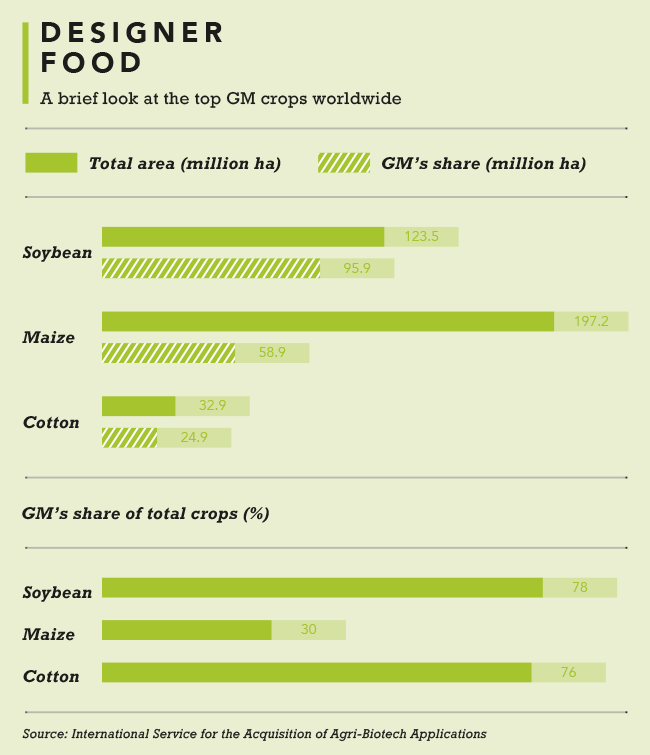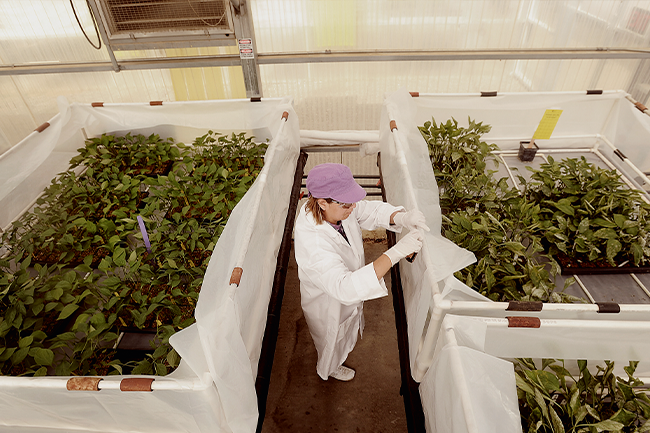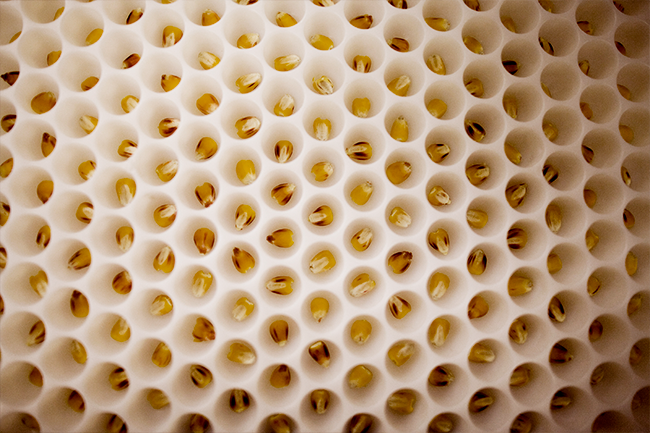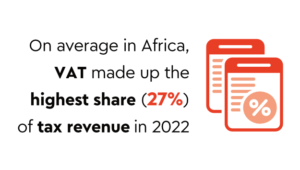Food security means having enough accessible safe, nutritious food for all people to maintain a healthy and active life. And it’s seldom been more at risk than today, as the world’s population of hungry people continues to grow in areas such as sub-Saharan Africa, while the effects of climate change come home to roost – raised temperatures, reduced water sources, decreased arable land and more outbreaks of disease and pests, from fall armyworm to biblical locusts.
The FAO reports that up to 811 million people faced hunger in 2020, and the UN predicts the world population is likely to rise from around 7.8 billion today to 10.9 billion by 2100. Among the most threatened communities are those in the SADC region (including rural South Africa), which rely on agriculture for their livelihoods. In 2017, 6.8 million South Africans experienced hunger, says Statistics South Africa, an impressive reduction from 13.5 million in 2002. But then the pandemic hit. The National Income Dynamics-Coronavirus Rapid Mobile survey published in July this year shows that 13.4 million people were living in households affected by hunger.
The agricultural sector is adapting by improving farming practices through irrigation, mechanisation, IT developments and – perhaps most potently – through genetic-modification (GM) technology. A GMO is a living organism with its genetic material manipulated in a laboratory for a specific outcome, such as resistance to drought, heat, cold, pests or disease. GM crops have been widely used internationally for about 25 years and, in South Africa, for pretty much as long. If you tucked into maize porridge for breakfast today, chances are you were eating GMOs – around 86% of South Africa’s maize is now genetically modified to contain a protein from a soil bacterium, Bacillus thuringiensis (Bt). The protein protects the bacterium from pests, killing them if they eat it. This gives the GM maize a built-in defence, saving farmers the need to use pesticides – some of which themselves contain Bt.
 As plant virologist and biotechnologist Ed Rybicki, director of the biopharming research unit at the University of Cape Town, explains, the Bt in a GM crop affects only a narrowly targeted range of pests (such as the stalk borer), which, before GM, was done by spraying everything. This meant pesticides entered the water supply, soil … even surrounding homes. And pesticides are often neither environmentally friendly nor economical; repeated use can also create pesticide resistance in a wide range of pests. An added benefit of Bt maize is that it’s less susceptible to fungal infection resulting from pest damage to plants, says Rybicki, further improving food safety by lowering mycotoxin levels in crops.
As plant virologist and biotechnologist Ed Rybicki, director of the biopharming research unit at the University of Cape Town, explains, the Bt in a GM crop affects only a narrowly targeted range of pests (such as the stalk borer), which, before GM, was done by spraying everything. This meant pesticides entered the water supply, soil … even surrounding homes. And pesticides are often neither environmentally friendly nor economical; repeated use can also create pesticide resistance in a wide range of pests. An added benefit of Bt maize is that it’s less susceptible to fungal infection resulting from pest damage to plants, says Rybicki, further improving food safety by lowering mycotoxin levels in crops.
Yet pesticides sprayed on crops can be effectively removed simply by washing fruit and vegetables with water or soaking them in solutions of salt, chlorine or detergent, according to a review in the Journal of Food Science and Technology. Meanwhile, another review notes that ‘ultrasound-assisted cleaning’ can be ‘an environment-friendly and effective pesticide-eliminating process unique in its ability to remove the contaminants compared to conventional methods’.
South Africa’s GMO Act of 1997 requires sticking to international biosafety standards, and all GM crops grown in the country are stringently tested for human, animal and environmental safety, say GM advocates. There have been no reported cases of food- or feed-safety issues associated with the technology in all the years GM products have been on the market.
‘Government regulators and every major scientific body that’s reviewed the safety of GM foods have come to the same conclusion – these crops are safe for human health, animals and the environment,’ says Liza Bohlmann, communications business partner: crop science for Bayer South and East Africa.
Testing includes measuring levels of all nutrients, including metabolites and proteins, in the food to ensure they fall in the normal range and that new potential allergens aren’t present, according to Lukeshni Chetty, GM of the South African National Seed Organisation. ‘Thorough, rigorous science-based risk analysis is the basis of these tests to ensure that approved GM products are as safe as their conventional counterparts.’
Besides, growers have been manipulating crops for thousands of years through selective cross-breeding – but this has not kept pace with population growth, climate change and other threats to food security. Genetic modification is simply a more precise way to create organisms with more benefits in a relatively short time. And unlike selective breeding and inter-species crossing, scientists know exactly which genes are affected when they splice those for desired traits into crops, affecting just a few genes against thousands affected by conventional breeding methods.
Foods derived from GM crops have undergone more testing than any other food in history. ‘The science is quite clear,’ says the American Association for the Advancement of Science. ‘Crop improvement by the modern molecular techniques of biotechnology is safe.’ The Academy of Science of South Africa agrees, as does the US Food and Drug Administration, the American Medical Association, Royal Society of London, European Food Safety Authority and WHO. All have declared GMO foods safe.

Today some 70 countries, from the US and Canada to China, England, Sweden, Spain, Portugal, India and most of South America, have embraced GM crops, as has South Africa. Some European countries, however, including France, Germany, Austria, Denmark, Greece, Italy, Hungary, the Netherlands, Poland and Luxembourg, have banned GMOs, considering the advantage to agriculture and food production weak, and responding to demand from consumers for freedom of choice between GM and non-GM foods. EU regulations stipulate measures to avoid mixing foods and feed produced from GM crops and from conventional or organic crops, which require isolation distances or biological containment measures.
In Africa, South Africa is one of only a handful of countries to have approved the commercial production of GM crops. It has been growing, consuming and trading in GMOs since 1996 in what’s been called a ‘permissive’ approach. Most other SADC countries have opted for a ‘precautionary’ approach, taking into consideration perceived risks and possible unknown consequences of GMOs for health and the environment.
Critics of GMOs are also concerned that with GM crops (as with conventional hybrid crops), farmers can’t keep seeds to plant, but must buy new ones each year. Control and ownership of GM seeds rests with multinational corporations that hold the patents.
This undermines indigenous farmers’ rights and places control outside the country, say critics such as Biowatch South Africa, an environmental-justice NGO. It argues that a large proportion of crop diversity has been lost through GMO crops, reducing ecological resilience in affected ecosystems.
Rybicki notes, however, that ‘all hybrid seed, which is what all commercial maize growers and many small farmers use, is owned by companies – and people never plant their own crop, because you get genetic segregation. So, no change there’.
Criticism of GM food production also comes from some scientists for not yet delivering fully on the promise to reduce world hunger or the need for pesticides – as well as for ‘genetic contamination’ of nearby fields of traditional or organically grown maize. There’s concern too about the development of ‘super weeds’ and ‘super bugs’, though GMO advocates note that these began before GM farming through overuse of herbicides and pesticides. In any case, says Rybicki, ‘maize has no weedy relatives in Africa, so the case of gene introduction into other species to make super weeds doesn’t arise, and that’s probably true for soybean and cotton too’.
Today South Africa is the biggest producer of GMO crops in Africa, and the ninth-largest globally, with 86% of its maize being GMO, around 90% of soybean and 100% of cotton. Crops under research for genetic modification in Africa include cowpea, sorghum, banana, coconut, squash and grape.
Scientists elsewhere have produced apples that don’t brown (the gene causing oxidation is switched off), potatoes that won’t bruise and tomatoes that are resistant to frost (with anti-freeze genes from winter flounder, a coldwater fish).
It’s hard to predict the next new plant disease or pest threat to food security, but scientists are warning of the possibility of emerging pathogens that have evolved virulent new characteristics through the effects of climate change and global spread – the plant equivalent of the coronavirus pandemic. Hopefully, sufficient safe, monitored GM supplies may help South Africa and the world ride that out.
By Glynis Horning
Images: Gallo/Getty Images
















